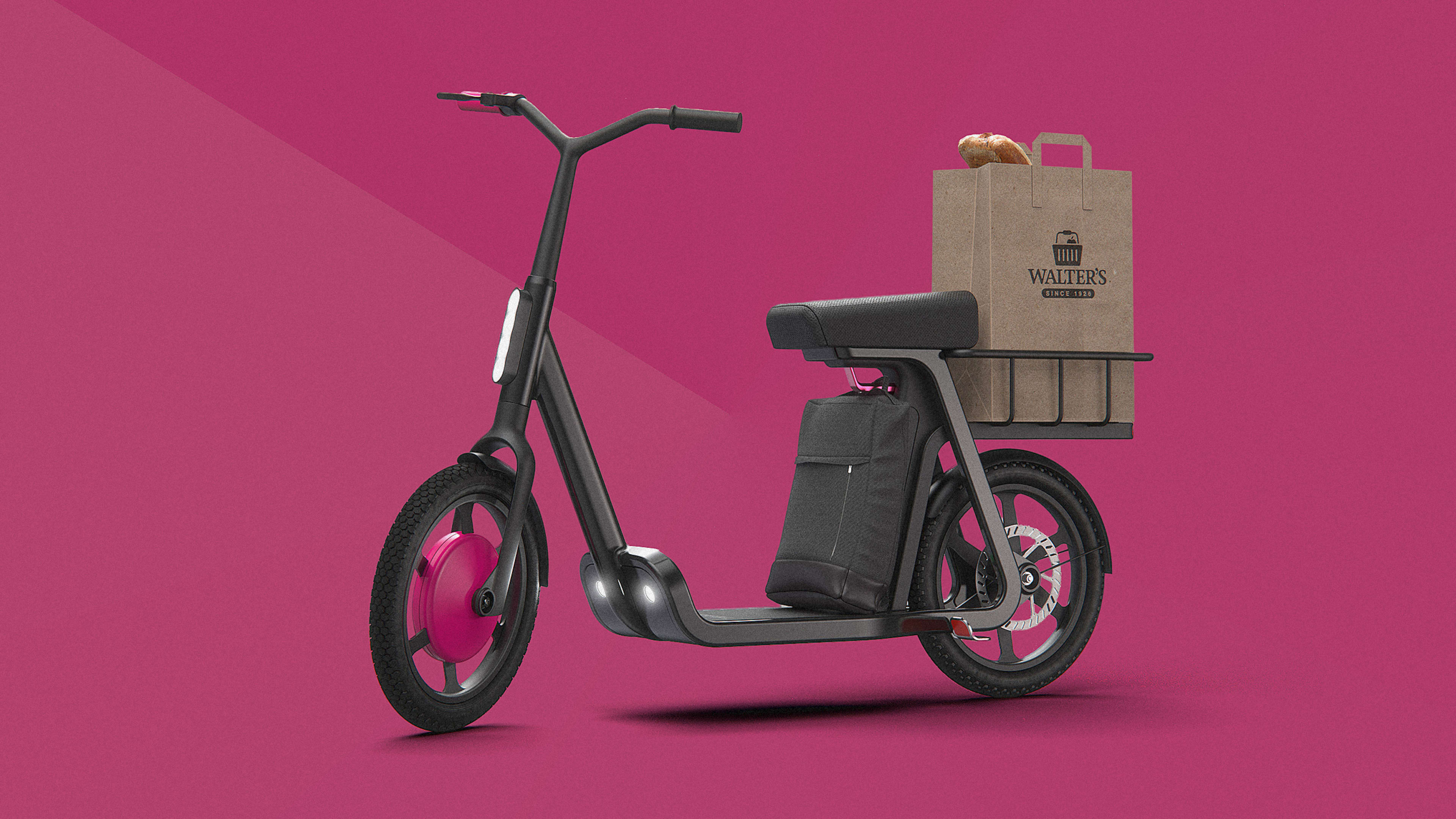Shared electric scooters are the vanguard of new micromobility fleets that are being deployed in cities across the United States. There are good reasons for this. Along with dockless bicycles, electric scooters get people between transit stops and their actual destination—the proverbial “last mile”—and provide new options for short- and medium-distance trips underserved by buses, subways, and light rail. Plus, in a transportation landscape transformed by the coronavirus, electric scooters offer solo, open-air, socially distanced mobility.
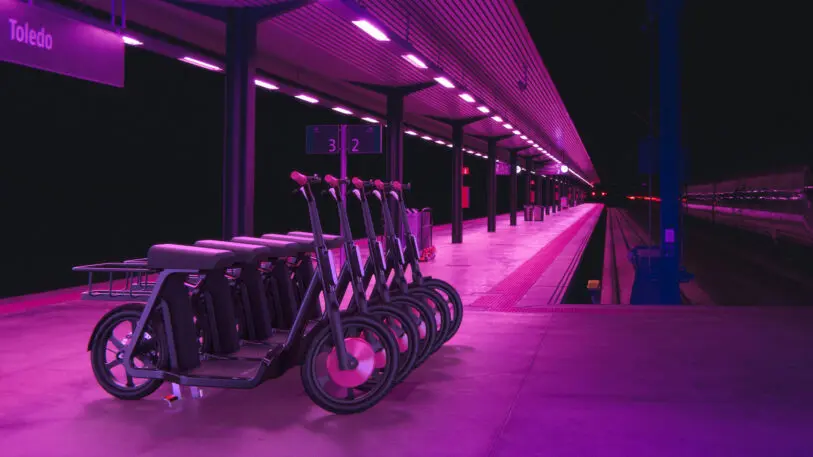
Taken together, these challenges point to an overarching truth: The shared electric scooters we have now are not the vehicles that cities would have designed to serve commuters. In fact, the ideal shared electric scooter would work and look quite differently. Here’s how.
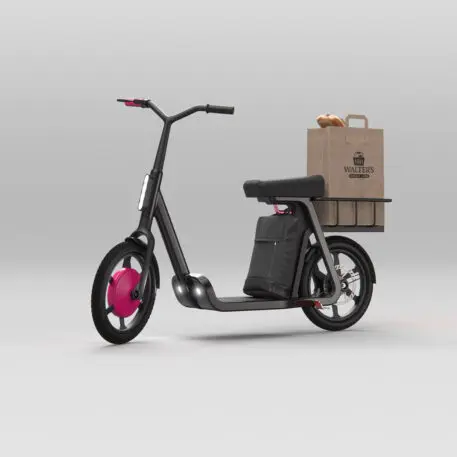
Seating riders for safety
The shared electric scooters in service today require the rider to stand. This creates a number of ergonomic and even social problems. First, the ergonomics of the standing posture puts the rider’s center of gravity in a precarious position. Without much ability to bend their knees or widen their stance, any disruption to the scooter’s forward motion—from a crack in the sidewalk to the need to brake quickly—threatens to spill the rider from the scooter and send them to the emergency room.
Second, the standing posture often puts the rider’s sightline higher than that of pedestrians. Psychologically, this creates an unnatural hierarchy wherein riders are “above” pedestrians in the same way that SUVs lord over smaller cars, and tempts riders to zip around pedestrians and into open spots.
Lastly, the evolution of the electric scooter has posed unanswered questions about who they’re actually made for. The form factor itself originates from early 20th-century “kick” scooters that kids would often build themselves. Early designs by Swiss inventor Wim Ouboter in the 1990s, which focused on adult use, somehow turned into the wildly popular Razor at the turn of the millennium, a model that was marketed to kids. All of this has created the net impression that this design is for kids—not commuters.
Instead of a toy-like vehicle that requires the rider to stand, a more successful one-size-fits-most electric scooter features much larger wheelbases and a seated position. A vehicle with bigger wheels and a seated rider is far more resilient against uneven surfaces and sudden stops. Those ergonomics and mechanics also eliminate the problematic interactions with pedestrians that sometimes happen with a tall, fast-accelerating vehicle sharing the sidewalk. This type of vehicle also creates more balance between the size of the vehicle and the rider—eliminating the appearance of an adult using a toy.
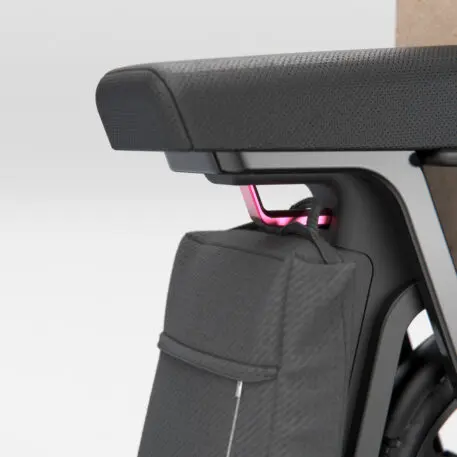
Solving for the realities of bags
Stowage for bags and other personal items is a tricky challenge for micromobility. The current stand-up electric scooter models lack stowage options altogether, and the user agreements for both Bird and Lime discourage riders from wearing backpacks, satchels, or other bags since they can compromise balance. This is an obvious deficiency since most commuters carry a bag of some kind. Some shared bicycles, such as Lime’s (formerly Uber’s) Jump bikes, address this stowage problem through a basket placed in front of the handlebars. But this creates a different problem: Passersby often use the baskets as impromptu waste bins.
There are straightforward-yet-elegant fixes for these problems, namely a basket on the back that isn’t a garbage trap, and a locking hook for bags located under the vehicle seat. These features account for the everyday reality that people carry bags but don’t compromise the rider’s balance. Also, the locking mechanism for the bag stowage is integrated with the kickstand so that the rider can only end their trip after first removing their bag from the hook and engaging the kickstand. This ensures that bags aren’t left behind, and also encourages the rider to park the scooter in an upright position.
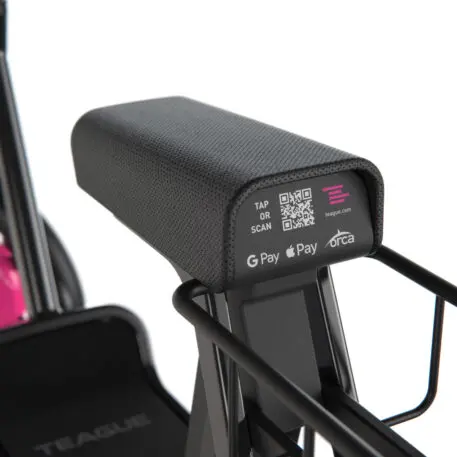
Addressing inequity through payment platforms
Transportation is a social justice issue. That’s because a city’s transportation choices—and the benefits of those choices—are not equally distributed across different populations. In São Paulo, Brazil, the wealthy can afford rooftop-to-rooftop transit via helicopter, while poorer residents toil in traffic jams that are hundreds of miles long. In the U.S., there’s a history of minorities having a more difficult time accessing ride-hailing services, and the urban poor are the most likely to get around on foot (and yet live in neighborhoods where that is the most difficult). While shared electric scooters have the potential to address some of these problems, there are also risks that they simply become the latest addition to this landscape of inequity.
These equity and economic challenges pose an altogether different question: are shared electric scooter fleets even using the right business model? An alternate model—in which these fleets are integrated with a city’s smartcard system for public transit payments—would help manage more equitable access, including for those without bank accounts and cell phones. That’s because municipal services, including those smartcard systems, are required to provide access to all, whereas the accessibility of app-based services provided by technology and mobility startups is typically much narrower.
Integrating with municipal systems would also create new possibilities for the public transit system as a whole. For example, fares could be priced on a scaling basis by a rider’s zip code (rather than having individuals designate themselves as “disadvantaged” and take the extra steps of applying for low-income access programs). Also, incentives for optimizing transit efficiency could be priced dynamically, including discounts for riders who help redistribute scooters away from where they cluster, bundled fares for trips that start or end at transit hubs, and financial rewards for safe riding and parking practices. This model turns cities and operators into partners—rather than the existing regulator-licensee relationship, and shifts riders from consumers of private, app-based services toward citizens empowered by intermodal public transit.
Changes to the riding position, the payment systems, and how bags are stowed should not be mistaken for iterative innovations. They are transformative, and move us beyond the problematic vehicles we have today and toward the shared electric scooter we actually need.
Devin Liddell is the principal futurist at Teague, working collaboratively with clients such as Boeing, Ford, Intel, Nike, Panasonic, Segway, Starbucks, T-Mobile, and Toyota to design preferred futures in aviation, automotive, smart cities, personal mobility, space travel, and more.
Joshua Maruska is a principal designer at Teague, working at the intersection of technology, creativity, and craft. For more than 20 years, he has been designing iconic, industry-leading products and experiences for bold brands including Google, Starbucks, Microsoft, Intel, and Nike.
Recognize your brand’s excellence by applying to this year’s Brands That Matter Awards before the early-rate deadline, May 3.
